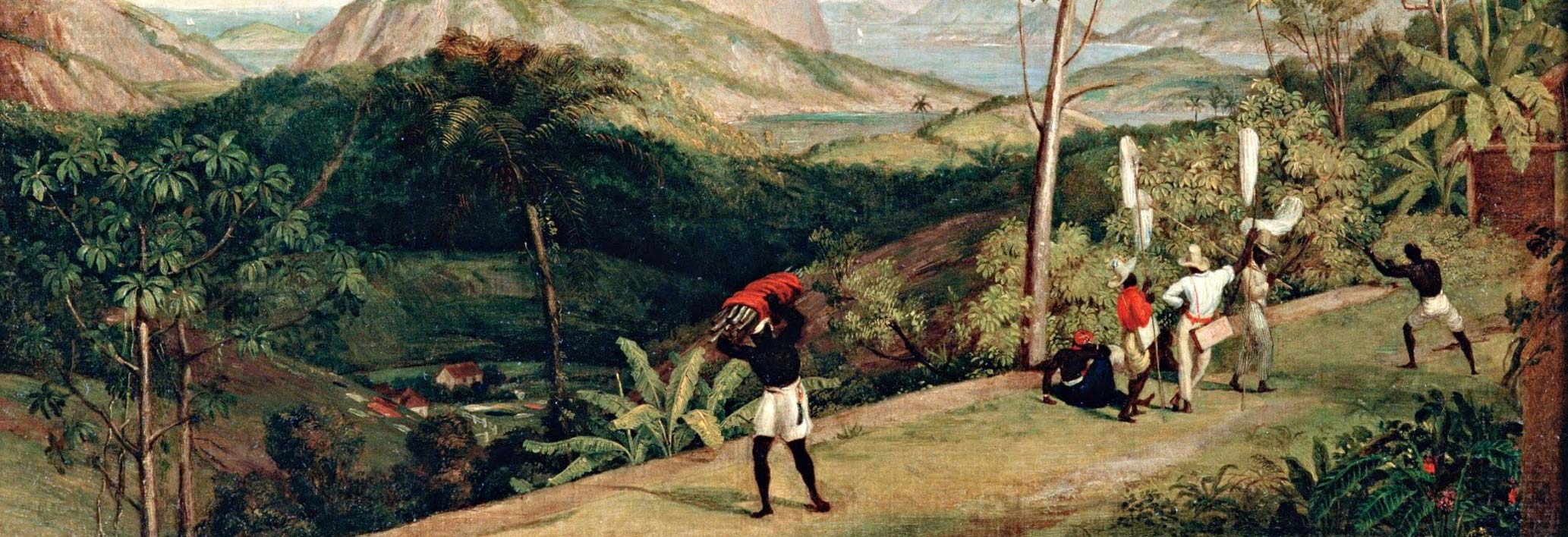Albina Maria da Conceição was an emancipated African who challenged her illegal re-enslavement in nineteenth-century Brazil.
Albina was born around 1846 in Luanda, the capital of the Portuguese colony of Angola. As a young child she was abducted by a slave merchant and transported to Brazil. Albina’s chest carried a customary hot-iron brand in the form of an “I,” confirming her Luanda origins. The ship that carried her across the Atlantic was captured under antislavery measures intended to suppress the then-illegal trans-Atlantic slave trade.
Sent on to Rio de Janeiro, Albina was delivered to the lieutenant and engineer Pedro Bandeira de Gouveia, who was expected to educate her as a domestic servant. At that time, liberated Africans like Albina were compelled to remain in Brazil to learn Portuguese and the Christian religion. They were to work under the protection or custody of the state or free persons, under the promise of a future life as free people. Full emancipation almost never happened.
Albina traveled with Gouveia’s family to Belém, capital of Pará province, where she was placed in the custody of provincial president Dr. Fausto Augusto de Aguiar. Custody of Albina was then ceded to the family of the physician and politician, Joaquim Frutuoso Pereira Guimarães. Mariana Pimenta Cabedo, Guimarães’s widow, treated Albina as a slave and sold her to Ignácia Bucheira, who later sold her to Anna Fillipa, who in turn sold her to Tiburcio. Albina eventually came to be owned by Antonio Joaquim Nogueira, who sold her again to José dos Santos. Finally, Santos resold Albina to José Soares da Silva Pimentel, owner of a soap factory in Belém.
In 1876, Albina went before the judicial system to demand her freedom. Several free people helped her, including Jose Maria de Sá Lamego, who used the local press to report the story of Albina’s illegal bondage. He also took the case to the provincial president and police authorities without much success. Finally, the Portuguese consul offered help. Albina was technically a Portuguese citizen, having been born in a Portuguese colony. Once the legal process to achieve freedom had started, her last owner agreed to establish a price for manumission.
Although her bondage was illegal, paying the price for freedom avoided a protracted lawsuit that carried with it no guarantees for success. A record of the result of Albina’s struggle for freedom and when she died does not survive. Nonetheless, her life is representative of the many Africans who struggled against illegal enslavement in nineteenth-century Brazil.
Bibliography
Bezerra Neto, José Maia. Escravidão negra no Grão-Pará (sécs. XVII–XIX). 2d ed. Belém: Editora Paka-Tatu, 2012.
Bezerra Neto, José Maia. “Migrantes do Cativeiro: O tráfico entre províncias e os escravos ingressos no Pará, século XIX.” In Migrações na Amazônia, edited by Cristina Donza Cancela and Rafael Chambouleyron, pp. 41–54. Belém, Brazil: Editora Acaí, 2010.
Maia Bezerra Neto, José. "Conceição, Albina Maria da." Dictionary of Caribbean and Afro-Latin American Biography, edited by Franklin W. Knight and Henry Louis Gates Jr. Oxford African American Studies Center, https://doi.org/10.1093/acref/9780195301731.013.73679 (accessed Wed Sep 01 2021).
Salles, Vicente. O negro no Pará: Sob o regime da escravidão. 3d ed. Belém, Brazil: Instituto de Artes do Pará, 2005.
Author
José Maia Bezerra Neto
Adapted by
James Almeida and Steven J. Niven
Contributing Institutions
Hutchins Center for African & African American Research, Harvard University, Cambridge, MA.
Oxford University Press (USA) African American Studies Center.





